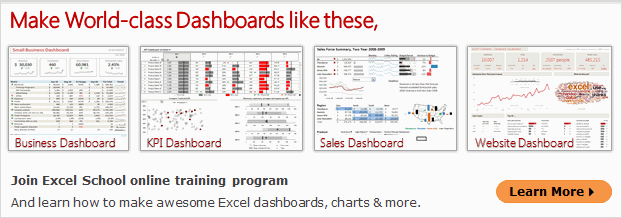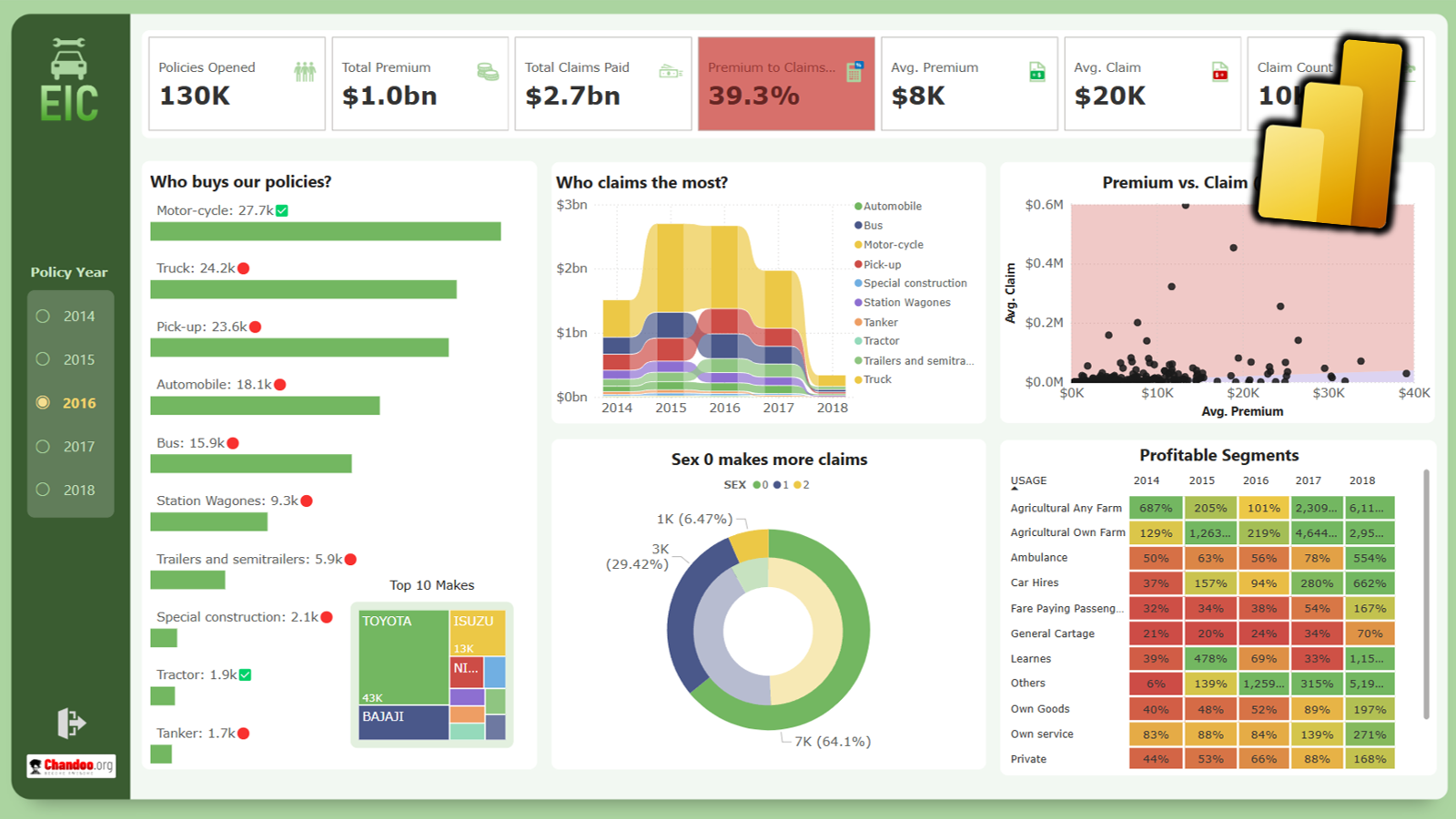Creating KPI Dashboards in Microsoft Excel is a series of 6 posts by Robert.
This 6 Part Tutorial on KPI Dashboards Teaches YOU:
Creating a Scrollable List View in Dashboard
Add Ability to Sort on Any KPI to the Dashboard
Highlight KPIs Based on Percentile
Add Microcharts to KPI Dashboards
Compare 2 KPIs in the Dashboards Using Form Controls
Show the Distribution of a KPI using Box Plots
Dashboards have become quite popular in the last few years and in spite of all the Business Intelligence software products that provide dashboards, a lot of dashboards are still implemented with Microsoft Excel.
What is a Dashboard?
According to Stephen Few, one of the world-wide leading authorities on visualization and dashboard design,
a dashboard is a visual display of the most important information […] which fits entirely on a single computer screen […]
(Information Dashboard Design, 2006)
The Scrolling Problem
Fitting on a single computer screen is the challenge this post will solve. Imagine you have a large list of 100 or more items (e.g. products, sales regions, etc.) with several corresponding Key Performance Indicators (e.g. prices, costs of goods sold, sales, etc.) and you want to show this in a table on your management dashboard. The whole table will not fit on a single computer screen anymore. Most of the time it will be sufficient to show the first or largest 10 items only. But what if the user of your dashboard wants to scroll down the table and see the rest of the data? Sure, you might teach him to go to the sheet with the data and scroll up and down there. But this is not convenient, not user-friendly, insecure and not the purpose of a dashboard.
The solution

The table on our dashboard doesn’t need much explanation. The only thing that differs from millions of other numeric tables in Excel is the slider scroll-bar between the names of the items and the data. This scroll-bar allows the user of the dashboard to walk through the whole list and see all items without leaving the dash-board. The table is small and leaves a lot of space for tables or charts on the dashboard.
Download the excel sheet containing KPI Dashboard solution to learn this better.
The implementation
- First have our raw data ready in a separate sheet, this is the easy step, you know how to get your data in to one sheet. So skip to next one.
- Next create a 10 row table for the dash board
- Insert a scroll bar form control Go to Menu > view > tool bars and select “forms” to see the forms tool bar. Select the scrollbar control from forms tool bar and draw one on your spreadsheet.

- Assign the scroll bar control to a cell right click on it and select format control option. In the dialog box, go to “control” tab and adjust the values as shown below:

- Finally write OFFSET() formula to display any consecutive 10 values in our scrollable table: OFFSET is used on the dashboard to bring back those 10 lines from the sheet with the raw data that are selected by using the scroll bar. A sample formula is shown here:
=OFFSET(Data!E5,Calculation!$D$5,0)where Data!E5 refers to the column containing the required data, Calculation!$d$5 has the current scroll bar value. That is all, you will have a small table that you can use to see all data using scroll

What next?
Make sure you have downloaded KPI Dashboard solution workbook to learn this better.
Read the next article in this series:Part 2: Add Ability to Sort on Any KPI to the Dashboard
Also, Checkout our Excel Dashboards Page for more examples and resources.
Chandoo’s note: Robert is a regular reader and commenter on this blog. Drop your comments / questions here and I am sure he will answer them 🙂





















